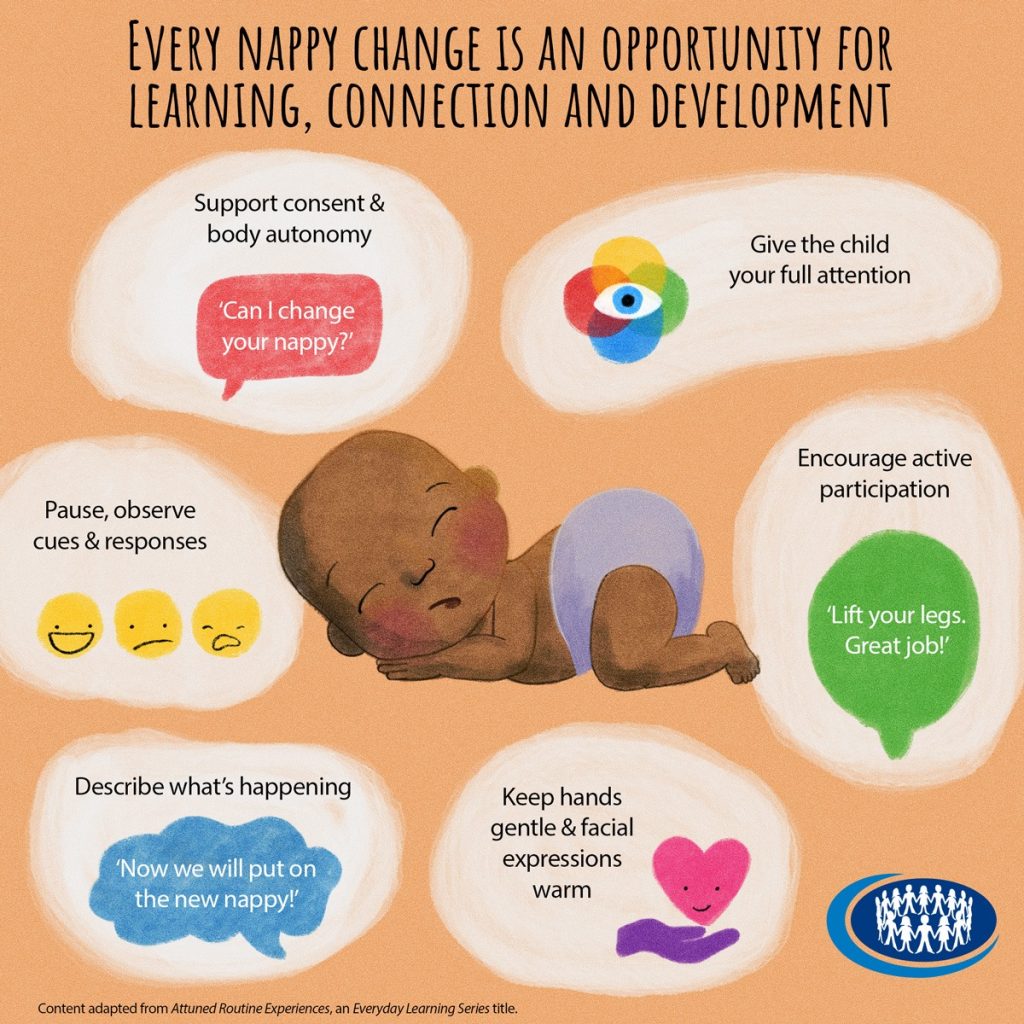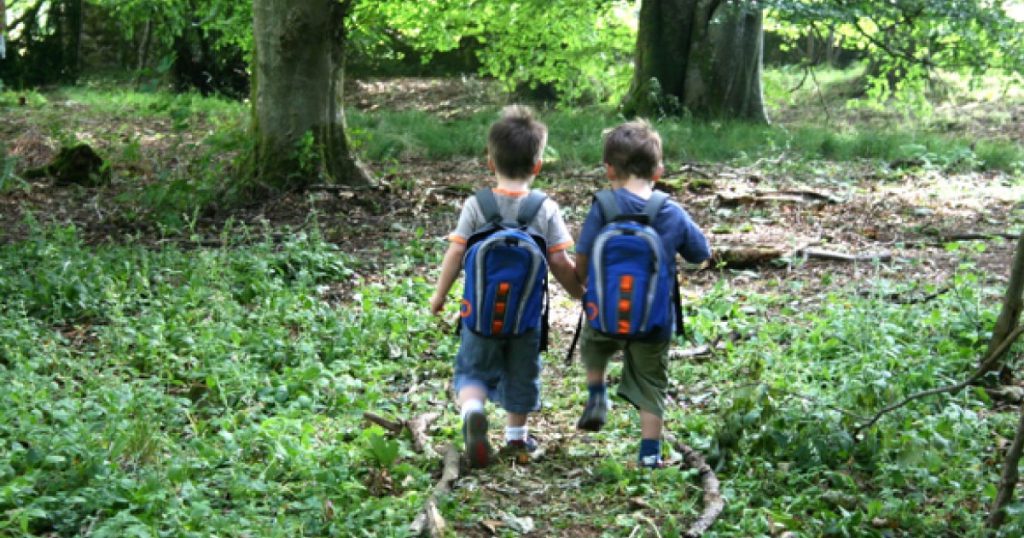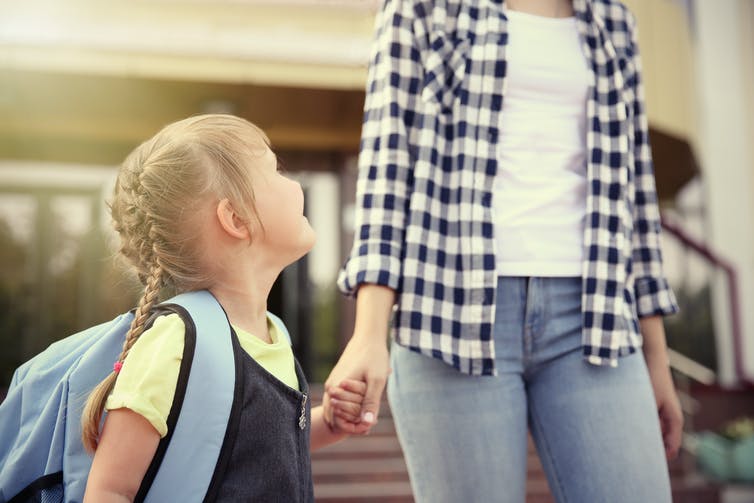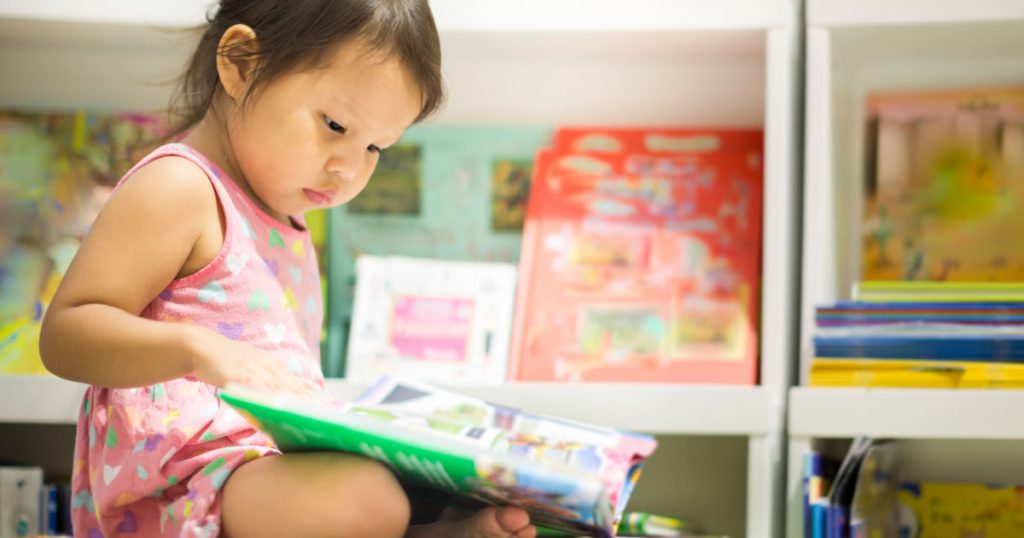Attuned routines give us the chance to reconsider our interactions and focus on pausing to be truly with a child. One opportunity for an attuned routine experience is nappy changes. Here Dr Katherine Bussey and Michelle Richardson share some insights for us as we reconceptualise this routine task.

Reconceptualising nappy changes and toileting key times for learning requires educators to facilitate opportunities for children to be actively involved. This supports children to learn how to lead their toileting experiences independently in the future. It also helps children build communication skills, through rich one-on-one conversations with educators about what is happening, and supports them to gain understandings of consent, of their bodies and how they work.
Children experience thousands of nappy changes during the early years. This provides regular opportunities for creating predictable patterns for children and consistent ways of approaching routines for educators. Toilet learning is a more relevant term, as toileting should be a learning process that children facilitate and learn to understand.
It is important for toileting to be an autonomous activity led by the child and not a process that families or educators ‘accelerate through training’ (Belza et al., 2019, p. 497).
The child’s role in nappy changes is to be an active participant. Toddlers can lift their legs and bottoms when educators ask them to, and educators can pause and wait for a response. Older children can unstrap their own nappies. Toddlers can gradually learn to undress themselves and wipe their own bottoms, kick-starting their journey to independent toilet learning. Encouraging children to be active participants and to pay attention to what is happening with their bodies is also a vital part of learning more about consensual touch to their most intimate parts.
‘… toileting should be a learning
process that children facilitate
and learn to understand.’
The role of educators, when changing nappies, is to ensure that children get their full attention. This is an integral part of the curriculum, so time and resources need to be allocated to this routine. This can be a chance for educators to support language learning by continually describing what is happening during the experience. They can label and put words on actions and feelings, for example, by describing what will happen next, when the child should be involved and in which way. These times are a great opportunity for using rich, full sentences; pausing and observing the child’s eyes, face and body; and waiting for cues and responses. This way, children learn how conversations work, what it means
to be listened to and how to share with someone else. During the process, educators need to ensure that their hands are gentle and their facial expressions are positive and inviting.
Nappy changing spaces should ideally be peaceful and quiet, allowing genuine opportunity for one-on-one conversation, connection and learning. If nappy change spaces are lined up
next to one another, educators and children may miss the opportunity to focus together. The environment should be set up in a way that helps avoid distractions from what is
happening in the moment.
‘Nappy changing spaces should
be set up in a way that helps
avoid distractions from what is
happening in the moment.’
Using clear communication not only helps the child know when it is time to change their nappy, it gives them information about the physical sensations relating to toileting and what will happen next. For example, you could say, ’Your nappy is looking heavy and wet. Let’s go change it together.’ Give the child advance notice before you touch them with a wipe—‘This will be cold and wet. Are you ready?’ Pause and look at the child’s face for indications that they have understood what you said. For young infants, slight changes in their muscle tone indicate they have heard you and are likely ready for the next step.
Through attuned routine experiences, children feel safe and are encouraged to stay present in the moment. They learn that educators listen carefully to what they say and pay attention to their verbal and non-verbal cues. Children will also learn about their bodies and develop their sense of agency, while practising self-help skills they will build on for the rest of their lives.
Co-authors
Dr Katherine Bussey is an infant and toddler specialist originally from Auckland, Aotearoa New Zealand. Lisa moved to Melbourne in February 2013 to undertake her PhD, completing it in 2017. She investigated the work of infant and toddler specialists in Early Childhood Teacher Education in Universities in Australia and Aotearoa New Zealand.
Lisa is the chairperson for the Infant and Toddler Advocacy Network Australia (ITANA) www.itana.org.au
Lisa is a research fellow, senior research assistant, project manager, and have lectured at Deakin University and ACU in Melbourne.
Michelle Richardson is an early childhood teacher and graduate of Macquarie University. More recently Michelle has worked in senior leadership roles, supporting teams and individual educators in the crucial role they enact each day with children and their families. Michelle oversees the Education Hub, Gowrie NSW’s professional learning program and provides pedagogical leadership across the programs of the organisation. Michelle is driven to ensure spaces for children and their families are deeply respectful, meaningful and connected places for children to uniquely be themselves and thrive.
ECA Recommends
Attuned routine experiences
By Dr Katherine Bussey and Michelle Richardson
The way in which routine experiences are established and enacted with infants and toddlers in early childhood settings significantly influences opportunities for learning and relationship-building. This Everyday Learning Series title uses research and evidence-based practice to provoke thinking and promote routines as key, meaningful moments for young children. Purchase your copy on the ECA Shop here.



